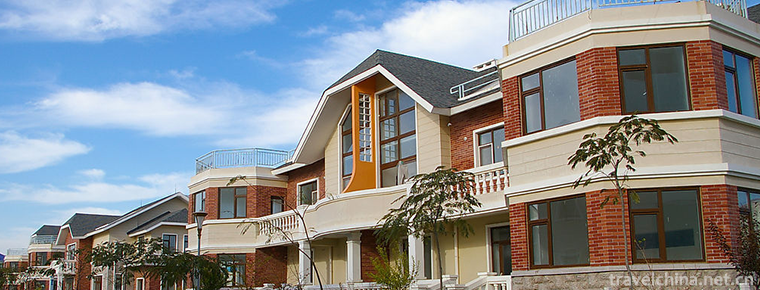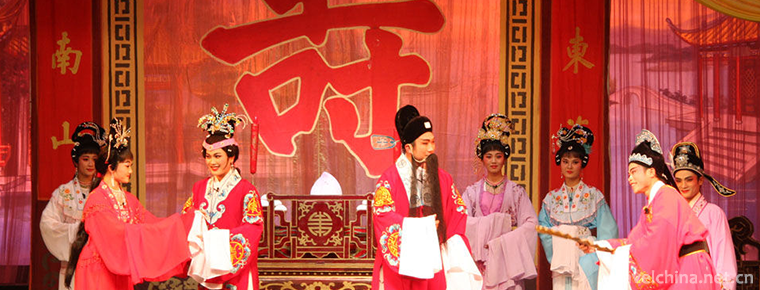Beijing Institute Of Petrochemical Technology
Beijing Institute Of Petrochemical Technology
Beijing Petrochemical College was founded in 1978. It was developed from the Second Branch of Beijing Chemical College and Beijing Petrochemical College. It became more famous in 1992 and was transferred to Beijing by Sinopec Group in 2000. Over the past 40 years, the school has adhered to the concept of "advocating practice, paying equal attention to knowledge and practice", adhered to the school spirit of "unity, diligence, realism and innovation", inherited the characteristics of practical education, adhered to the central position of talent cultivation, based on moral cultivation, adhered to the connotative development road with quality improvement as the core, and integrated strength and innovation. The overall level has been greatly improved, and it has developed into a general university with a distinctive engineering practice characteristics, which is mainly based on work, permeated by many disciplines, such as engineering, science, management, economics and literature. Over 38300 graduates have been trained.
At present, the school has 14 teaching institutes (departments and departments), four master's degree authorized first-level disciplines, including materials science and engineering, control science and engineering, mechanical engineering, business administration, one master's degree authorized category of materials and chemical engineering, 37 undergraduate specialties and one postdoctoral research workstation. There are 7 396 full-time students, including 6960 undergraduates, 295 postgraduates, 111 international students and 30 preparatory students, and 131 postgraduates and 8 doctoral students. In 2018, Beijing Ph.D. degree was awarded to construction units.
The school implements the strategy of strengthening the school with talents, and the teachers'strength is constantly increasing. There are more than 800 faculty members, including 514 full-time teachers, 56.8% of senior titles and 56.6% of doctoral degree teachers. The school has successively introduced and nurtured a special professor of "Yangtze River Scholars" from the Ministry of Education, a winner of the National Outstanding Youth Science Fund, two specialists from the State, three outstanding talents from the Ministry of Education in the new century, and more than 100 teachers with various Beijing-level talent titles such as Beijing Great Wall Scholars and Beijing Teaching Famous Teachers. There are 5 excellent teaching teams and 13 academic innovation teams in Beijing.
Schools strive to explore new models of talent cultivation and deepen the reform of education and teaching. The school is the CDIO engineering education reform pilot University of the Ministry of Education, and joined the CDIO International Cooperation Organization in 2012. It is the first batch of "Excellent Engineer Education Training Plan" Pilot Universities of the Ministry of Education, Beijing Deepening Innovation and Entrepreneurship Education Reform Demonstration Universities, and high-level athletes Recruitment Qualifications universities. Six undergraduate majors have passed the national engineering education professional certification; they have three national characteristic specialty construction points, eight pilot specialties of "Excellence Plan", one pilot specialty of comprehensive reform of "Undergraduate Teaching Engineering" of Ministry of Education, five Beijing characteristic specialties and one Beijing first-class construction specialty; in recent years, they have gained a total of state-level education. Two second-class awards for academic achievement and 21 Beijing teaching achievement awards; one national virtual simulation experimental teaching center, two national engineering practical education centers, one national experimental teaching demonstration center, one National University Students'off-campus practical education base, and four experimental teaching demonstration centers in Beijing universities and eight northern areas. Beijing Off-campus Talents Training Base, 2 Beijing Demonstration Intra-school Innovation Practice Bases and 1 Beijing University Demonstration Entrepreneurship Center.
The school has constructed a win-win, long-term and stable cooperative education mechanism. In succession, 181 enterprises and institutions, such as Yanshan Petrochemical Company, Zhongguancun Software Park and Beijing Economic and Technological Development Zone Biomedical Park, have jointly established a talent training base for industry-university cooperation. The school is the national experimental base of cooperative education between universities and research institutes and the construction unit of quality education base for college students at Beijing level. In recent years, students have participated in various disciplines competition and innovation and entrepreneurship competitions in the state and Beijing, with high enthusiasm and wide participation. They have achieved excellent results in electronic design, chemical design, "Internet +", intelligent robots and so on. Graduates' engineering practice ability has been widely praised by employers.
The school takes energy science and technology innovation and urban safe operation as the main line, and actively serves Beijing's economic and social development and energy industry needs. At present, there are one high-quality and cutting-edge construction discipline in Beijing, four key construction disciplines in Beijing, five key laboratories in Beijing, one engineering research center in Beijing universities and colleges, and one research base in philosophy and Social Sciences in Beijing. It has established a collaborative innovation center for the supply and use of clean energy (oil and gas) and Zhongguancun Energy. Source Engineering Intelligent Equipment Industry Technology Research Institute, Beijing Institute of Safety Production Engineering Technology. Over the past five years, it has undertaken more than 130 national-level projects such as the National Natural Science Foundation, the National Social Science Foundation, the National Science and Technology Support Plan, the National Science and Technology Major Special Projects and the National Key Research and Development Plan, 140 provincial and ministerial-level projects such as the Beijing Science and Technology Plan and the Beijing Natural Science Foundation, and more than 700 horizontal projects of enterprises, and published SC. I/SSCI and EI retrieved more than 530 papers, applied for more than 630 invention patents, obtained more than 190 invention patents, and won 11 provincial and ministerial science and technology awards.
The school attaches importance to international exchanges and cooperation, and has established long-term and stable cooperative relations with more than 30 universities and scientific research institutions in more than 10 countries including Britain, France, the United States, Germany and Norway. It is Beijing's "one belt and one road" national talent training base. Every year, we organize "Top Ten Students" and "Top Ten Nominated Students" to go abroad for exchanges. Every year, a certain proportion of postgraduates and undergraduates visit European and American universities for study and research. Set up the "Chinese-French Engineer Class" and implement the "3+1+2" training mode.
The school has complete infrastructure and excellent running conditions. The three campuses, Qingyuan, Kangzhuang and Yanshan, have a total area of 466 mu, a building area of 264,000 square meters, a total value of 580 million yuan in teaching and scientific research instruments and equipment, 920,000 books in paper and 124,000 books in electronic collections.
Facing the future, the school will base itself on Beijing and face the whole country, adhere to the development of connotation, characteristics and differentiation, and strive to build a first-class applied undergraduate and postgraduate education system. Training applied talents, building applied disciplines, developing applied innovation and promoting applied achievements will make greater contributions to serving Beijing's "four centers" City strategic positioning and economic and social development, and will continue to advance towards the goal of building high-level application-oriented universities with distinctive features.
(Updated 9 April 2019)


-
Global Dinosaur City Scenic Spot
The National 5A Tourist Scenic Spot Global Dinosaur City, located in Xinbei District, Changzhou, Jiangsu Province, is a comprehensive tourism resort with dinosaur theme.
Views: 274 Time 2018-12-06 -
Three Lanes and Seven Alleys
Three Lanes and Seven Alleys(Sanfang Qixiang) is a national 5A tourist attraction, which is the only remaining part of the old city of Fuzhou .
Views: 217 Time 2018-12-08 -
Rushan Yintan Tourist Resort
Yintan Tourist Resort is located on the southeast coast of Rushan City, Weihai, Shandong Province. It connects Weihai to the east, Yantai to the north, Qingdao to the West and Huanghai to the south.
Views: 107 Time 2018-12-22 -
Lanxi stall spring
Lanxi Spring Spring Spring Spring is an ancient form of sitting and singing art, which was formed and popular in Lanxi area in the Midwest of Zhejiang Province, Jinhua and Quzhou, and belongs to Nanci.
Views: 150 Time 2019-05-10 -
Forging Technology of Nanjing Gold Foil
Nanjing gold foil forging technology, local traditional handicraft in Nanjing, Jiangsu Province, is one of the national intangible cultural heritage..
Views: 111 Time 2019-06-07 -
Hainan opera Qiongju Opera
In June 2008, Qiongju Opera declared by Hainan Qiongju Theatre and Haikou City was listed in the second batch of national intangible cultural heritage list with the approval of the State Council..
Views: 194 Time 2019-06-11 -
Xunyang Folk Song
Xunyang Folk Song is one of the local folk songs in Xunyang County, Ankang City, Shaanxi Province. It has a long history, rich melodies, various types and different styles. Like other folk art forms, .
Views: 126 Time 2019-07-09 -
Hua Mulan Movie
Mulan is produced by Walt Disney Studios. Niki Caro Directing, Liu Yifei , Donnie Yen , Gong Li , Jet Li A live action movie starring. The file was released in North America in March 27, 2020. .
Views: 170 Time 2019-09-04 -
University of Chinese Academy of Sciences
University of Chinese Academy of Sciences ( University of Chinese Academy of Sciences Referred to as "National Science and Technology University", was approved by the Ministry of education. .
Views: 112 Time 2019-12-11 -
A summary of Panzhihua
In 2019, the GDP of Panzhihua will reach 101.013 billion yuan, an increase of 6.3% over the previous year in terms of comparable prices. In terms of industries, the added value of the primary industry was 9.168 billion yuan, an increase of 3.4%; the added value of the secondary industry was 55.074 billion yuan, an increase of 5.7%; the added value of the tertiary industry was 36.771 billion yuan, an increase of 8.5%..
Views: 128 Time 2020-12-14 -
Cultural undertakings in Panzhihua
As of the end of 2018, Panzhihua has 3 museums and exhibition halls; 50 cultural (Art) museums, including 44 cultural stations and 8 theatres and cinemas; and 6 public libraries, with a total collection of 990800 books. There are 43 Township radio and television stations and.
Views: 245 Time 2020-12-14 -
Honorary title of Mianyang
National system to promote comprehensive innovation reform pilot area.
Views: 331 Time 2020-12-14









